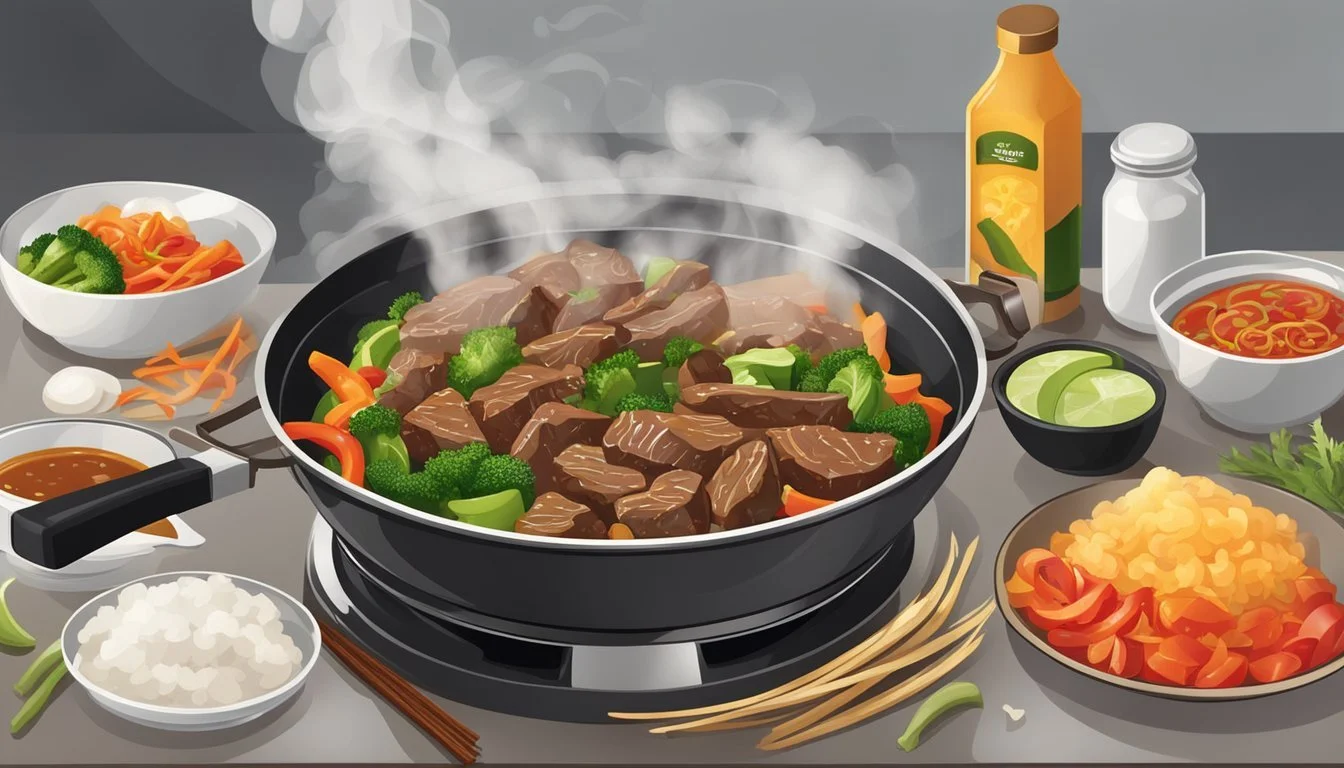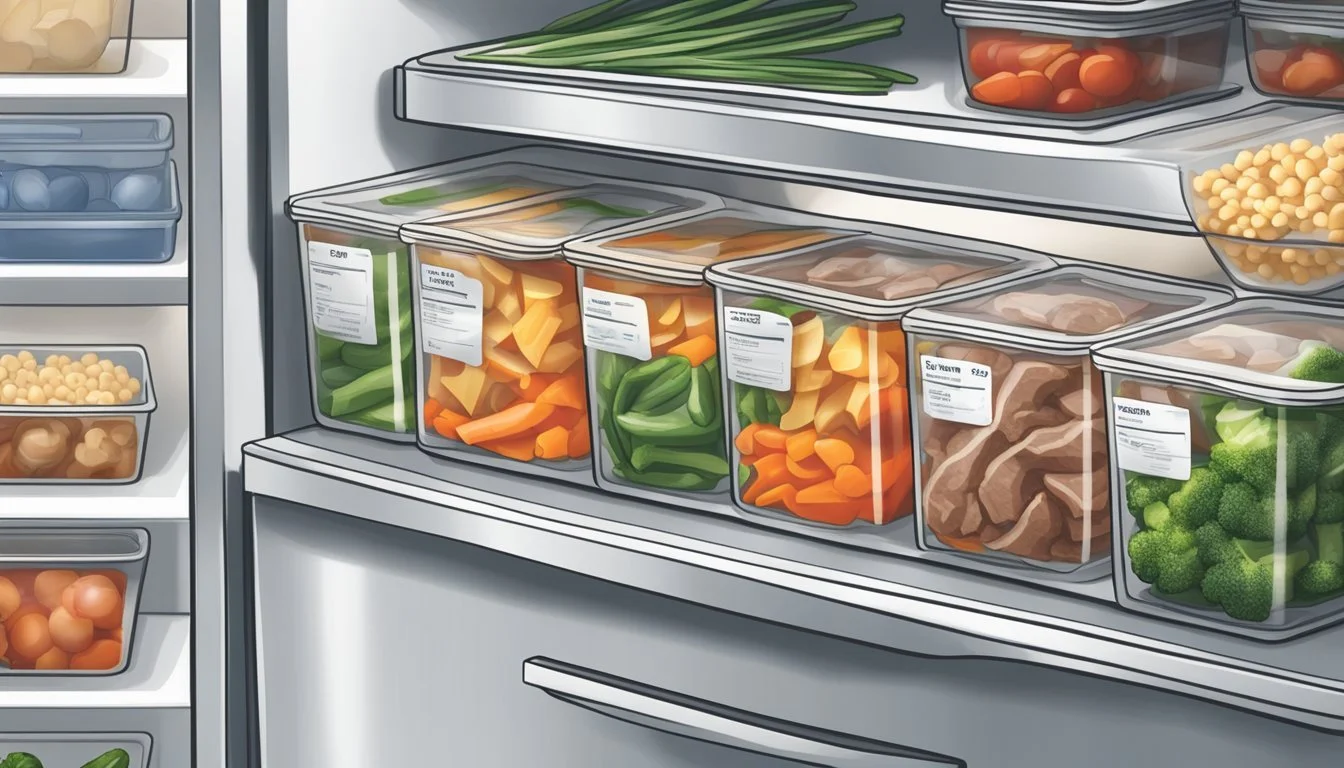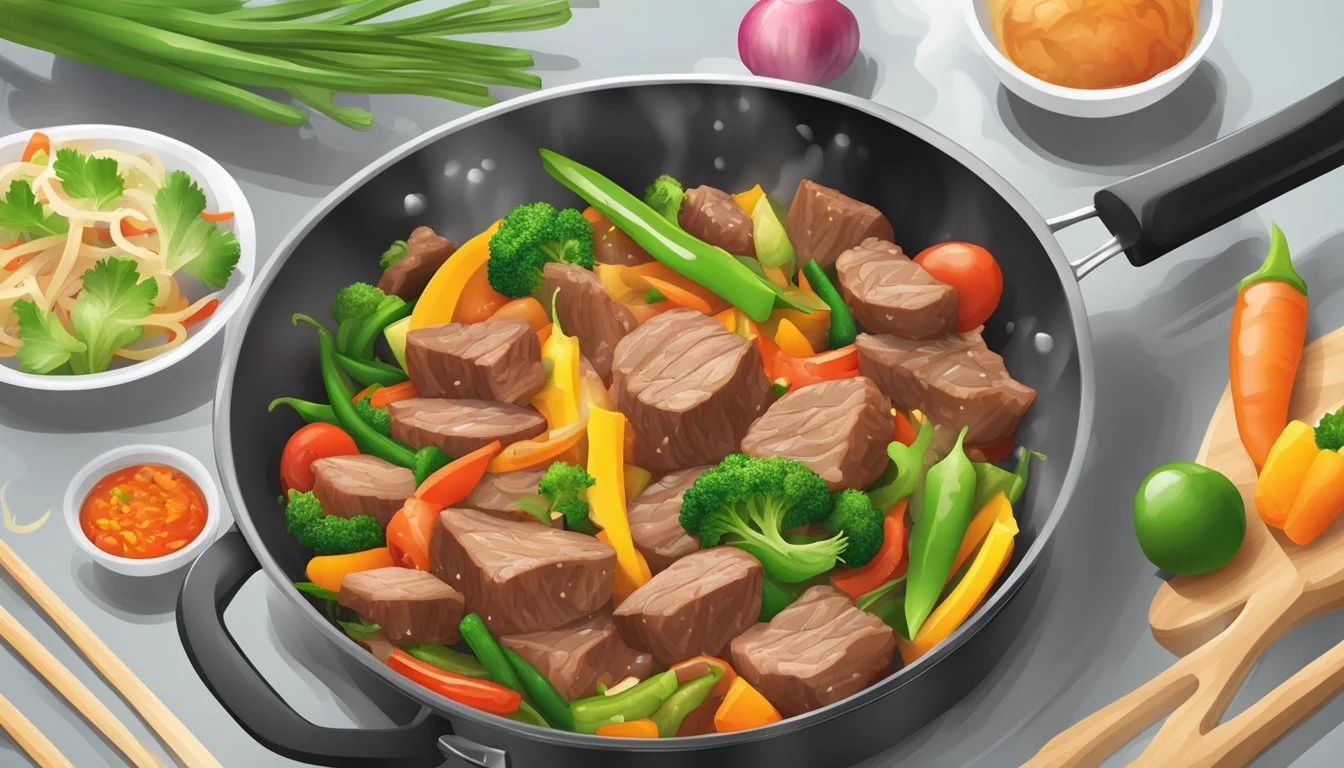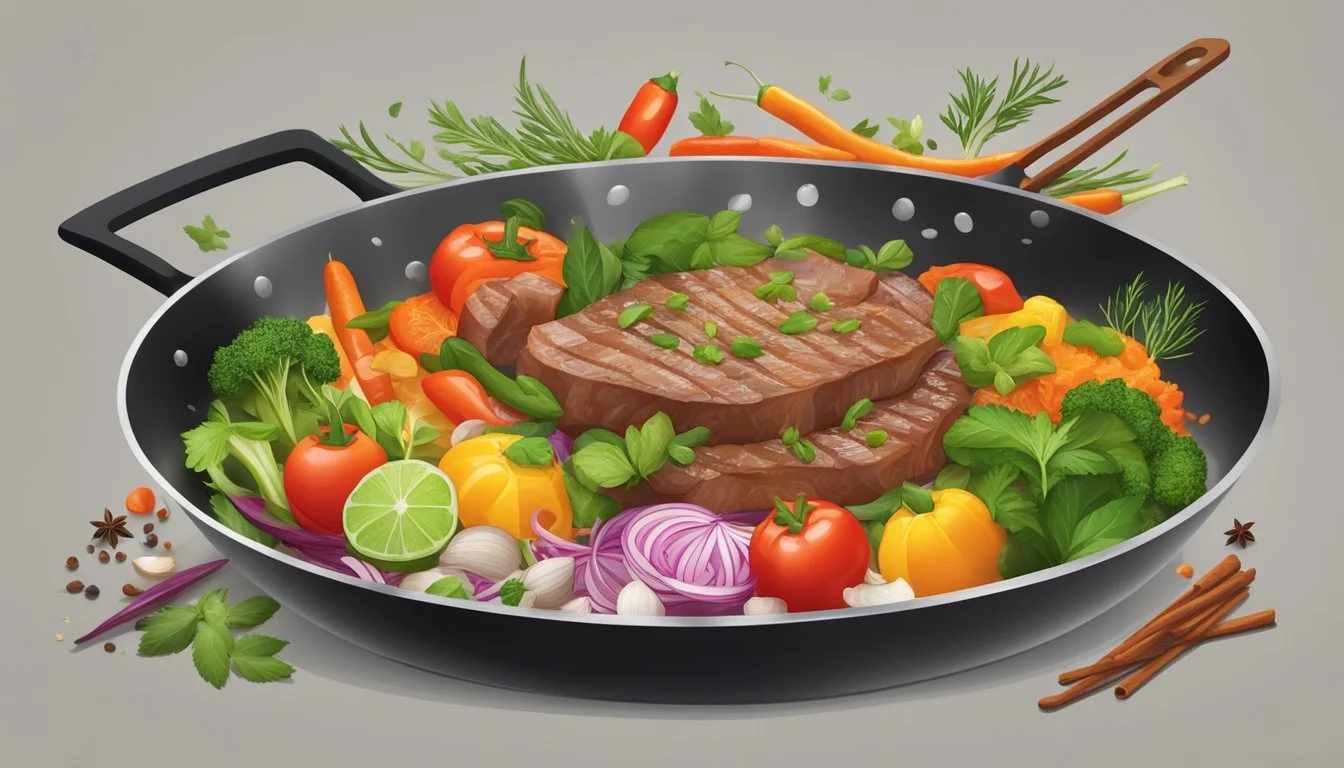How Long Does Beef and Vegetable Stir-Fry Last?
Storage Tips and Guidelines
Wondering how long you can keep that delicious beef and vegetable stir-fry in your fridge? This dish offers a quick, easy, and healthy meal option packed with flavor and texture. Properly stored, beef and vegetable stir-fry can last for about 3 to 4 days in the refrigerator. Storing leftovers correctly ensures you maintain the dish's integrity and can enjoy a tasty and safe meal later.
When storing stir-fry, ensuring it is kept in an airtight container is crucial. This preserves its flavors and prevents it from absorbing any unwanted odors from the fridge. Additionally, the quality of the ingredients and the method of cooking play a role in how long the stir-fry stays fresh, so always remember to cool it down before refrigerating.
To extend the shelf life even further, consider freezing the stir-fry if you don’t plan on consuming it within a few days. Freezing not only maintains the flavor but also keeps the texture intact, allowing you to enjoy your delicious stir-fry anytime.
Essential Ingredients for Stir-Fry
Creating the perfect stir-fry requires selecting quality beef, fresh vegetables, and using the right sauces and seasonings. Each component plays a critical role in achieving a flavorful and balanced dish.
Choosing the Right Beef
Selecting the right cut of beef is crucial for a tender and flavorful stir-fry. Popular choices include sirloin, flank steak, and ribeye. These cuts are known for their tenderness and flavor, especially when sliced thinly across the grain.
Marinating the beef enhances its flavor and tenderness. Key marinade ingredients often include soy sauce, garlic, ginger, and a bit of sugar or brown sugar. Marinate the beef for at least 30 minutes or overnight for the best results.
Selecting Fresh Vegetables
Using fresh vegetables is vital for a vibrant and nutritious stir-fry. Common choices include bell peppers, carrots, snap peas, broccoli, and onions. Each of these vegetables offers a unique texture and flavor, contributing to a well-rounded dish.
Preparation is key: slice vegetables uniformly to ensure even cooking. For instance, cut carrots into matchsticks and bell peppers into thin strips. Fresh garlic and ginger add depth, while green onions provide a bit of bite.
Stir-Fry Sauces and Seasonings
The sauce brings all the elements of a stir-fry together. A typical stir-fry sauce includes soy sauce, garlic, ginger, and a sweetener like brown sugar or honey. For added depth, consider incorporating sesame oil and beef stock.
Balancing flavors is essential. Combine salty, sweet, and umami elements to create a harmonious sauce. Thicken the sauce with a bit of cornstarch mixed with water if needed.
:bulb: Essential Seasonings:
Soy Sauce: Adds salty and umami flavors.
Garlic & Ginger: Provide a fragrant and zesty base.
Sesame Oil: Offers nuttiness and richness.
Brown Sugar: Balances the saltiness with a touch of sweetness.
Using quality ingredients and balancing flavors ensures a delicious stir-fry every time.
Preparation Techniques
Getting the best flavor and texture out of your beef and vegetable stir-fry requires attention to detail in both cutting and marinating processes. Proper preparation ensures even cooking and enhanced taste.
Optimal Cutting Methods
Cutting the beef and vegetables correctly is crucial. Beef should be sliced thinly against the grain to ensure tenderness. Typically, slices should be about 1/4 inch thick. Using a sharp knife or meat slicer helps achieve uniform pieces.
For vegetables like bell peppers, carrots, and broccoli, consistent cuts are important for even cooking. Try to cut vegetables into similar-sized pieces. Broccoli florets can be split into smaller bites, while carrots and bell peppers should be thinly sliced.
Sharp tools and correct cutting angles play a vital role in preparation.
Marinade and Flavoring
Marinating beef is essential for both tenderness and flavor. A basic marinade can be made with soy sauce, cornstarch, and oil. Adding cornstarch helps create a velvety texture, while oil aids in browning and prevents sticking. Let the beef marinate for at least 30 minutes.
Flavoring can be elevated with additional ingredients like garlic, ginger, and a touch of baking soda. Baking soda tenderizes the meat by breaking down its fibers. Massage the marinade into the beef thoroughly.
For the oil, canola or peanut oil is recommended due to their high smoke points, ensuring that the beef cooks quickly without burning.
Cooking and Stir-Fry Process
When cooking a beef and vegetable stir-fry, focusing on the right cookware and maintaining appropriate temperature and timing ensures the dish cooks perfectly. Using a wok and achieving high heat are critical elements.
Using the Right Cookware
A wok is ideal for stir-frying due to its shape, which helps keep the food moving. The sloping sides enable easy stirring and even cooking. By placing food at the center bottom initially, one ensures high contact with heat, which is essential for searing.
If a wok is unavailable, a large frying pan can be a substitute. However, ensuring the pan is hot before adding ingredients is vital. Handle the pan carefully to maintain constant movement and prevent food from sticking.
Control of Temperature and Time
Achieving high heat is crucial in stir-frying. Initially, heat the wok until it starts to smoke lightly. Then, add oil and immediately introduce aromatics like garlic and ginger to infuse the oil with flavor.
When adding meat, spread it out to maximize surface contact. This step ensures a proper sear, which locks in juices and enhances flavor. Stir frequently to ensure uniform cooking.
Vegetables, especially harder ones, should go in next to cook until tender yet crisp. The entire process, from starting to finish, typically takes 5-10 minutes due to the high heat, making it quick and efficient without compromising taste or texture.
Proper Storage Practices
Proper storage practices for beef and vegetable stir-fry ensure its freshness and safety. This section outlines the best methods for refrigerating, freezing, and thawing to extend the dish's shelf life while maintaining quality.
Refrigeration and Shelf Life
Beef and vegetable stir-fry stored in the refrigerator can last for 3 to 4 days. Use shallow, airtight containers to keep the stir-fry fresh and to minimize air exposure.
Temperature: Ensure the refrigerator is set at or below 40°F (4°C). This range helps inhibit bacterial growth.
Separating the stir-fry components such as rice or noodles from the vegetables and beef is ideal. This helps in achieving even cooling and maintaining the texture of each ingredient.
Label the containers with dates to keep track of the storage duration.
Freezing and Thawing Methods
For longer storage, freezing is a viable option. Beef and vegetable stir-fry can be frozen for up to 2-3 months. Use freezer-safe, airtight containers or heavy-duty freezer bags to pack the dish.
Remove as much air as possible from the containers to avoid freezer burn and preserve taste.
When ready to consume, thaw the stir-fry in the refrigerator overnight. This method maintains a consistent temperature, which is safer than thawing at room temperature.
Reheat thoroughly to an internal temperature of 165°F (74°C) to kill any potential bacteria ensuring a safe and delicious meal every time.
Reheating for Best Quality
Properly reheating beef and vegetable stir-fry helps preserve its flavor and texture while ensuring it remains safe to eat. Several techniques can be employed, each with its strengths.
Reheating Techniques
Skillet Method: Heating leftovers in a skillet is highly recommended. Start by adding a teaspoon of oil to a pan and heating it over medium heat. Once the oil is hot, add the leftover stir-fry. Stir frequently to ensure even heating and prevent sticking, which helps maintain the dish's integrity.
Microwave Method: If using a microwave, place the stir-fry in a microwaveable dish. Heat on medium, checking and stirring at one-minute intervals to prevent overheating. This method is quicker but requires caution to avoid making the vegetables mushy or drying out the meat.
Oven Method: For a hands-free option, preheat the oven to 350°F (175°C). Spread the stir-fry in a single layer on a baking sheet and cover loosely with aluminum foil. Heat for about 10-15 minutes until thoroughly warmed.
Maintaining Taste and Safety
To maintain the taste and ensure food safety, follow these crucial tips:
Avoid Overheating: Prevent the vegetables and meat from becoming overcooked and losing texture by heating just until warm.
Internal Temperature: Aim for an internal temperature of at least 165°F (74°C) to ensure the dish is safe to eat.
Hydrate When Needed: Rehydrating noodles or adding a splash of water can help keep the stir-fry moist.
Even Distribution: Ensure even distribution of heat by stirring frequently, especially in a skillet or microwave.
By using these methods and tips, reheating stir-fry can be done effectively, maintaining both quality and safety.
Food Safety and Preventing Illness
Proper food safety practices are essential to prevent foodborne illnesses when storing and reheating beef and vegetable stir-fry. Key areas to focus on include avoiding contamination and recognizing spoilage.
Avoiding Contamination
Contamination can lead to harmful bacteria growth, causing food poisoning. Always store stir-fry in airtight containers to prevent exposure to bacteria.
Refrigerate leftovers within two hours of cooking. This helps keep the food within the safe temperature range, or "danger zone," between 40°F and 140°F where bacteria thrive.
Wash hands, utensils, and surfaces thoroughly before and after handling the stir-fry to avoid cross-contamination. Use separate cutting boards for vegetables and raw meat to prevent bacterial transfer.
Proper reheating is also crucial. Heat stir-fry to an internal temperature of 165°F to kill any bacteria. Using a food thermometer ensures accuracy and safety.
Recognizing Spoilage
Recognizing spoilage is vital to ensure the food's safety. Signs of spoilage in stir-fry include off smells, such as sour or rancid odors.
Visual cues are also important. Look for mold growth or any unusual discoloration on the vegetables or meat.
Texture changes can indicate spoilage. If the vegetables feel slimy or the beef develops an odd texture, it's best to discard the stir-fry.
Pay attention to the storage time. Generally, stir-fry lasts in the fridge for 3-4 days. Keeping track of when leftovers were made helps avoid consuming spoiled food.
Enhancing Stir-Fry Meals
Enhancing stir-fry meals involves selecting versatile ingredients and creative garnishing to elevate the dining experience. Incorporating a variety of vegetables, grains, and proteins can transform a simple dish into a culinary delight.
Versatile Ingredients and Substitutes
Choosing the right ingredients is key to a memorable stir-fry. Common choices include broccoli, snap peas, carrots, mushrooms, bok choy, and snow peas. These vegetables offer a range of textures and flavors that complement the dish. Less common but excellent options are cabbage and green onions, which add a unique twist.
Proteins like flank steak and tofu can be used interchangeably depending on preference. Flank steak benefits from a light coating of cornstarch before cooking, enhancing its tenderness. For those seeking a vegetarian option, tofu is an excellent substitute.
Grains such as noodles, white rice, and brown rice provide the perfect base for a stir-fry. Brown rice offers a nuttier flavor and more fiber while white rice provides a softer texture. Experimenting with different grain bases can introduce new dimensions to the meal.
Garnishing and Presentation
Garnishing enhances both the visual appeal and flavor profile of a stir-fry. Common garnishes include green onions, sesame seeds, and chopped nuts. These not only add a pop of color but also texture. Fresh herbs like cilantro or a splash of lime juice can brighten the dish further.
Presentation is equally important. Serving the stir-fry on a bed of brown or white rice, or even on a platter with noodles, makes the meal more inviting. Arranging vegetables and proteins thoughtfully ensures an appealing look, making the dish more appetizing.
Using colorful vegetables and thoughtful garnishes, one can elevate a simple stir-fry into a memorable meal that impresses both visually and taste-wise.
Troubleshooting Common Issues
Keeping stir-fry fresh and delicious involves addressing issues like soggy vegetables and overcooked meat. Here are some tips to ensure your beef and vegetable stir-fry remains tasty and enjoyable.
Preventing Soggy Vegetables
Vegetables becoming soggy is a common problem in stir-fry. The key is to remove excess moisture before cooking. Dry your vegetables thoroughly using a salad spinner or kitchen towels. Moisture causes the vegetables to steam and become soggy.
Another useful method is blanching. Briefly boil vegetables, then shock them in an ice bath. This helps retain their crispness and color. Avoid adding wet vegetables directly from the wash to the pan. Instead, add them dry.
Preheating the wok is vital. A hot wok ensures that moisture evaporates quickly, giving you a crisp texture instead of a soggy mess. Finally, resist overcrowding the pan, which leads to steaming rather than frying.
Solving Overcooking Problems
Overcooking beef can result in tough, chewy pieces. To avoid this, use cuts like sirloin or flank steak with more marbling. These cuts stay tender when cooked quickly.
Marinating the beef helps to tenderize it. Even a short marination with ingredients like soy sauce and a bit of acidity (such as vinegar or lime juice) can make a difference.
Cooking meat first, then setting it aside, prevents overcooking. Add it back to the stir-fry near the end. Using a thermometer is also helpful. Cook beef to an internal temperature of 145°F for medium-rare, ensuring it stays juicy and flavorful.
Remember, a hot pan is essential. This seals the meat quickly, locking in juices and preventing it from drying out. Avoid slicing the beef too thin, as this increases the risk of drying out during cooking.
Exploring Creative Variations
This section presents alternative ways to prepare beef and vegetable stir-fry recipes and explores incorporating different proteins, such as chicken, salmon, and tofu, to enhance variety and flavor.
Alternative Stir-Fry Recipes
Experimenting with different stir-fry recipes allows for a delightful culinary experience. One can substitute the typical beef with marinated chicken for a lighter option.
Alternatively, salmon offers a rich taste; combine it with a mix of broccoli, bell peppers, and snap peas for a nutritious meal.
Using tofu creates a vegetarian-friendly version that can replace beef or chicken. Ensure the tofu is pressed to remove excess moisture and marinated for better flavor absorption. Various vegetables like bok choy, carrots, and mushrooms can also be used, based on preferences.
Incorporating Different Proteins
Incorporating different proteins keeps meals interesting and nutritious. Chicken breast is a lean option that pairs well with a variety of vegetables, such as zucchini and baby corn. Marinating the chicken adds depth to the flavor profile.
Salmon adds omega-3 fatty acids and can be stir-fried with ginger and garlic, enhancing its natural flavors.
Tofu, a versatile vegetarian option, absorbs flavors exceptionally well. It can be stir-fried with soy sauce and sesame oil, creating a savory dish. Part of the key to incorporating these proteins lies in appropriate marinating and ensuring proper cooking times for each type.










